May 28th, 2021
posted
by Andrew Blomme on 5/27/2021
in
Weekly Newsletter

May 28th, 2021
In this week's newsletter we will look at growing degree unit accumulation and precipitation accumulation for the growing season, some observations from the field, and what to be looking for over the next couple of days.
Weekly Weather Summary
This week brought some much needed heat. Over the past 7 days we accumulated 125 GDU's. At this point in a corn crops lifecycle, it takes 84 GDU's to progress through each vegetative stage. The corn crop developed a leaf and a half this week. The map below shows our GDU accumulation for the 2021 growing season compared to average.
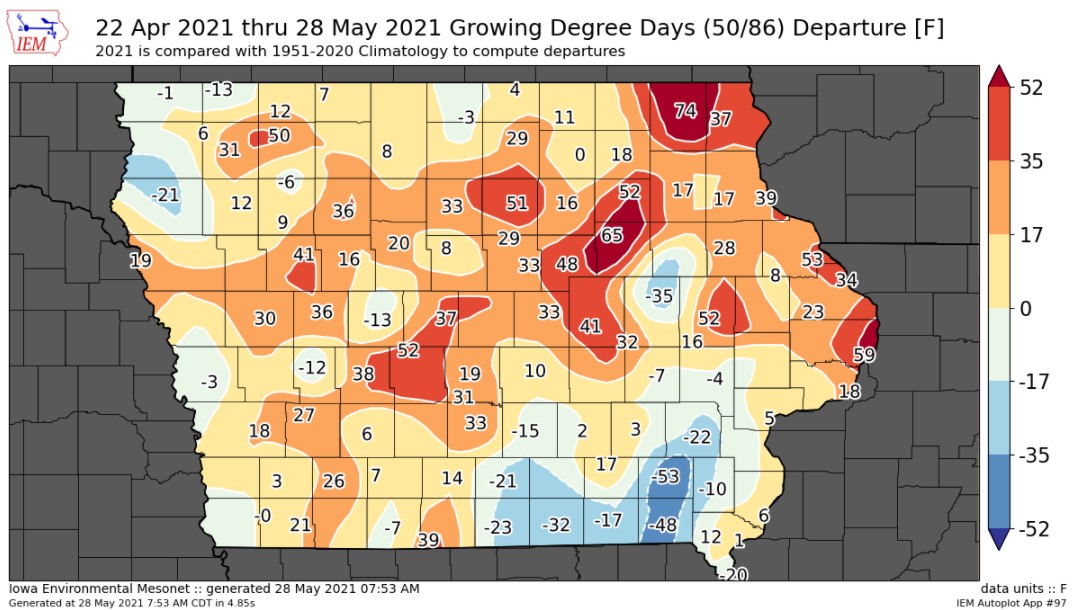
Our area is slightly above or slightly below average for GDU accumulation depending on geography. Looking forward, the next 2-3 days look cooler overall but then daytime temperatures rise again to resume this rapid GDU accumulation. In the heat of the summer, we expect to gain around 150 GDU's and progress through two leaf stages each week.
Moisture will be the biggest story of this growing season once again. We haven't been short of moisture as of late, but consistent rainfalls will be necessary into the future. The map below shows the precipitation totals for the state. The early trend shows wetter conditions on the southern end of the state leading to drier conditions as you head north.
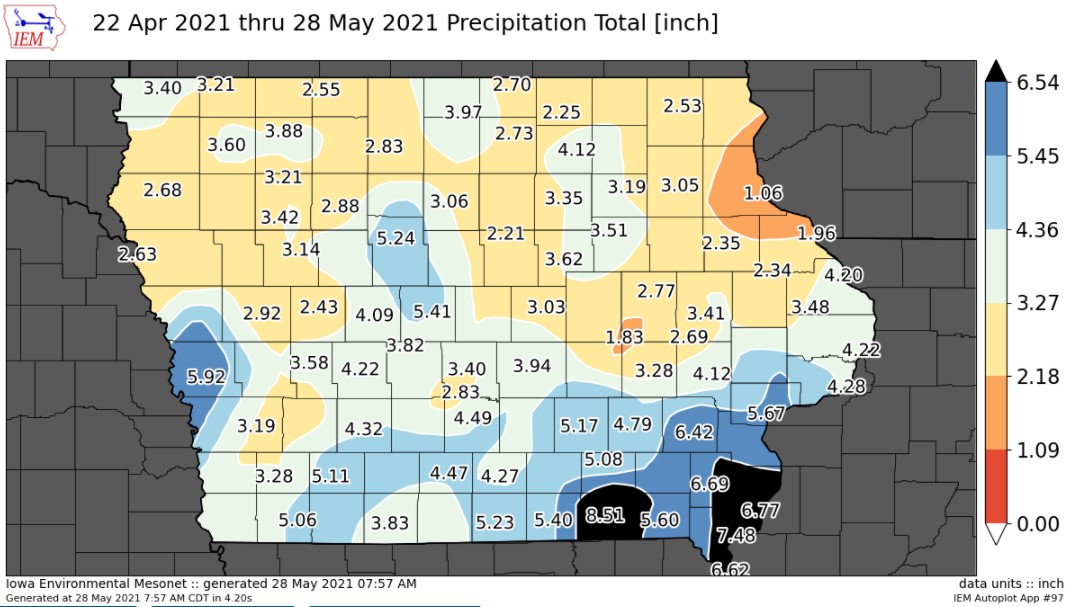
Our area has accumulated 2.5-3.5" of rain since the crop has been in the ground. At this point in the growing season, the crop is using less than 0.1" of moisture per day. As a result, we have slowly been replenishing our soil moisture reserves since the crop isn't using all the moisture we have received. A corn crop typically needs 20-25" of moisture throughout the entire growing season. This year, we will need the majority of that to come as rainfall.
The map below shows how precipitation totals for this year compare to average. The majority of the state is behind average for rainfall this growing season. It will be interesting how this map looks throughout the growing season.
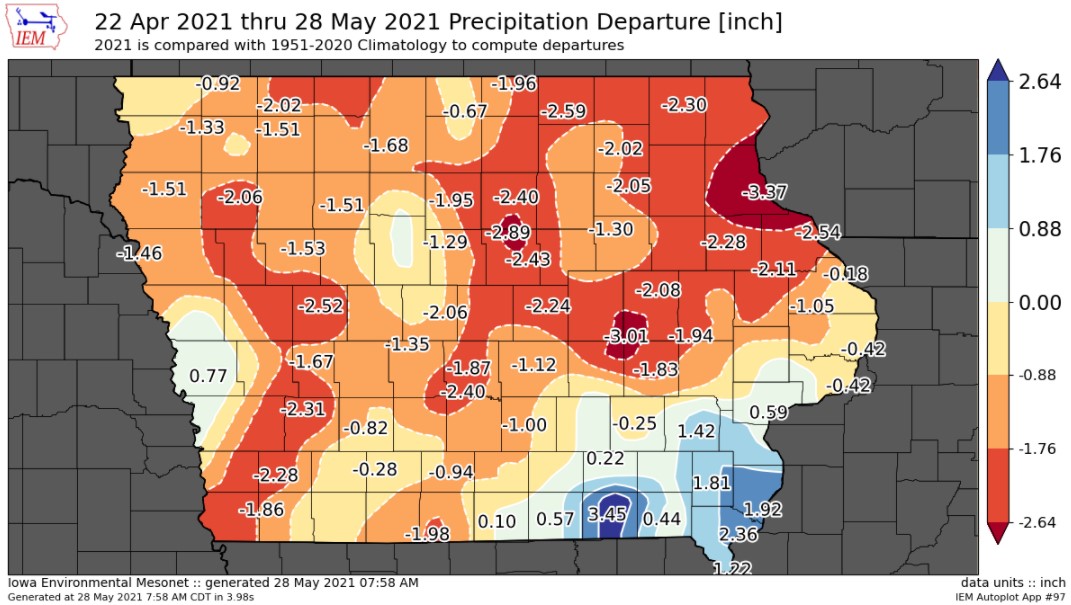
Insects
We are starting to see some signs of early season insect pests. I have noticed bean leaf beetle damage in soybean fields this week, especially in soybeans that were untreated. Bean leaf beetles are an early season insect that are effectively controlled with basic soybean seed treatments. The picture below shows typical bean leaf beetle injury on soybeans.
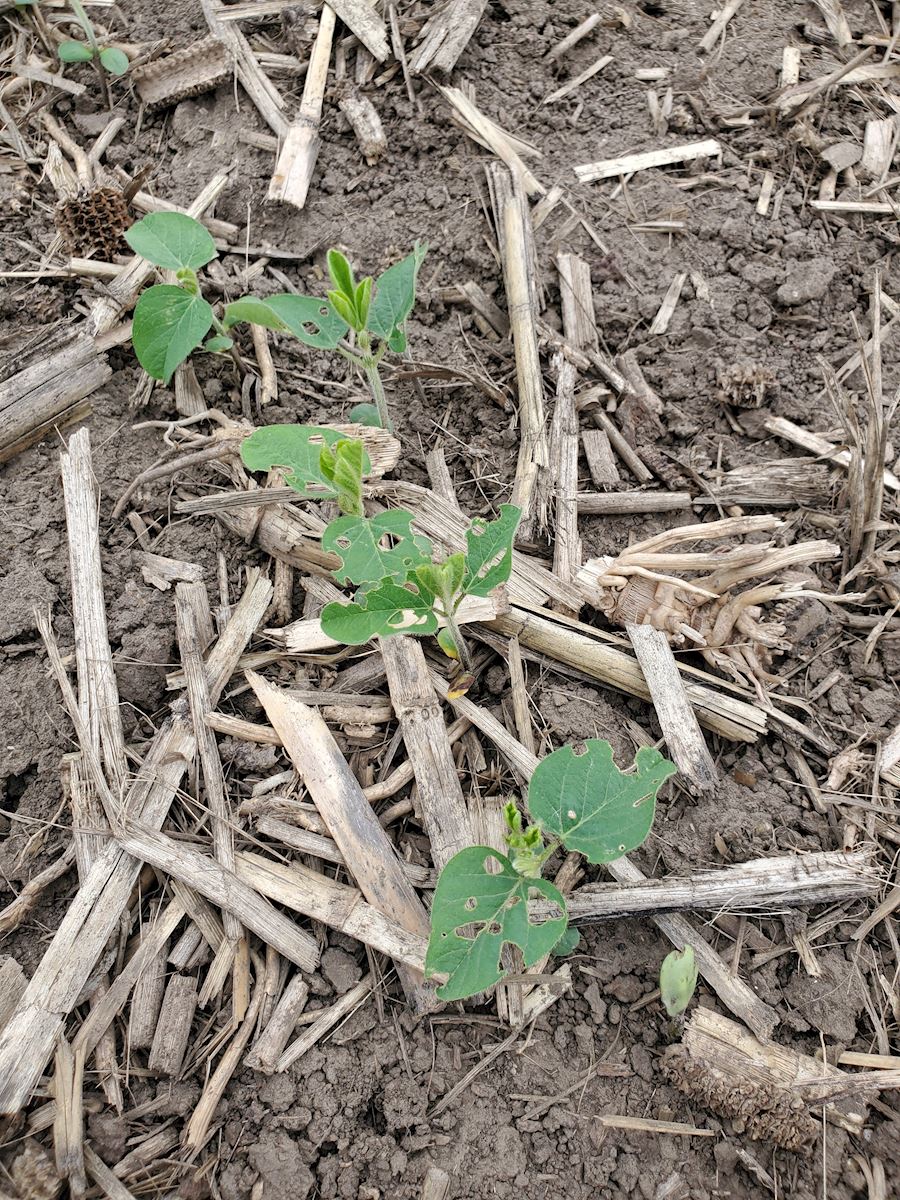
We are currently seeing the overwintering generation of bean leaf beetles. We will see their offspring in July and a second generation in late August into September.
We are approaching the peak damage timeframe for black cutworm in corn. Black cutworm typically infest in areas that had vegetation in April such as cover crops or CRP and can commonly be found in corn ground that has timber to the south. Once a corn plant reaches V5 the risk of black cutworm damage decreases considerably.
Nutrient Cycling
Nutrients, like nitrogen for example, can be in half a dozen different chemical forms in the soil at any moment. A corn plant can only absorb nitrogen in two very specific forms, ammonium (NH4 +) or nitrate (NO3 - ). It is the job of living microorganisms and microbes in the soil to convert the unusable forms of nitrogen into the two usable forms, ammonium and nitrate. This conversion happens for many nutrients through several biological processes.
This spring started out cooler and slowed down these biological conversion processes. In a few rare instances, I have seen signs of early season nutrient deficiencies in fields that have high fertility levels. The picture below is of a corn plant showing signs of sulfur deficiency.
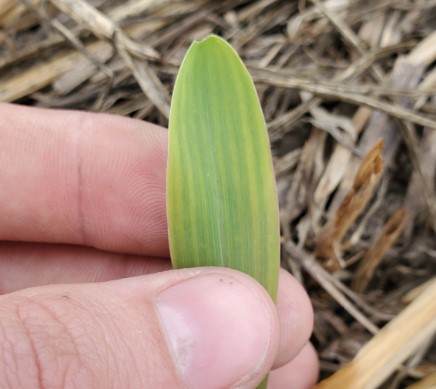
I saw these deficiency symptoms at the beginning of the week but saw fewer of them as the week progressed and days got hotter. As a general rule of thumb, biological processes double in speed for every 10 degree increase in temperature. In this case, we are talking about soil temperature because that is where the biological conversion processes are happening. As the soil temperatures continue to rise, the amount of nutrients available for the corn crop will increase and the deficiency symptoms will fix themselves.
The Week Ahead
There will be several things to look out for in the next 7 days. The forecast calls for warm temperatures starting on Monday for the next 7-10 days. This will ramp up GDU accumulation. The corn crop is getting to the stage where it will switch from it's seminal root system to it's nodal root system. This transition is often dubbed the "ugly corn stage." The nodal root system will be responsible for absorbing water and nutrients for a corn plant until maturity. Next week's newsletter will be covering these topics as well as other observations from the field.